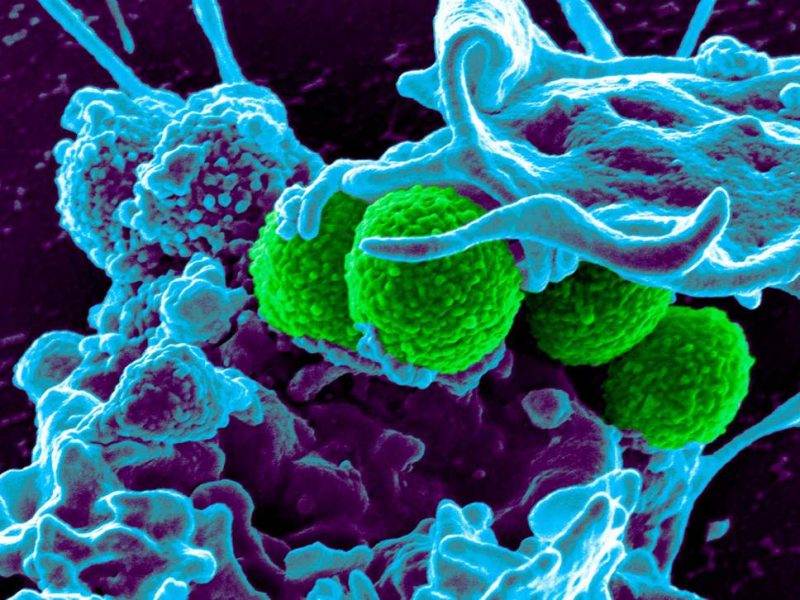Is alligator blood the cure for drug resistant gonorrhea?
Posted on October 26, 2018
(Source: https://www.independent.co.uk/news/science/human-virus-hybrid-bacteria-infection-mrsa-immune-system-rockefeller-university-a7686916.html)
Thanks to the discovery of penicillin in 1928, and the subsequent development of antibiotics, the treatment of infectious disease was revolutionized, life expectancy in the global north skyrocketed, and life generally got a little less scary. But is progress coming to an end? Many think yes (7). And with the emergence of the recent titular example, we’re in for one hell of a ride on the antibiotic-resistant bacteria laden waters of the river Styx.
Although bacterial resistance is a naturally emergent property of bacteria, the speed at which resistance is developing is an emergent property of our failed systems. Let me explain. All bacteria and microbes generally mutate naturally and spontaneously. Through our rampant antibiotic usage, however, we’ve subjected bacteria to artificial selection pressures that create a competitive advantage for mutated strains. In case you doubt the intensity of such pressures, you need only look to CDC data which shows that 1/3 of all antibiotics are unnecessarily prescribed (3). Additionally, antibiotic misuse (which includes dosing, selection, and duration) may approach 50% of all outpatient antibiotic use (2). Outside of the medical context, there are issues of indiscriminate antibiotic usage in agriculture, where 70% of U.S. antibiotics end up (7). Peeking at this pesky dilemma from a systems lens begs the question, where were the feedback loops?
If scientists have always known that antibiotic resistance was a threat, why didn’t they plan for it? What would this system look like today had we designed it with feedback loops from the onset? While this is by no means an exhaustive list, here are a few ideas on how to:
Prevent unnecessary prescriptions:
- Bacterial genotyping to determine the necessity of antibiotic use;
- Tracking the amount of antibiotics that individual providers/clinics prescribe and investigating in situations where excessive use is clear;
- Proactively monitoring patient microbiome changes to further understand individual resilience;
- Educating patients about bacterial resistance.
Prevent misuse:
- Patient-doctor follow up systems to ensure adherence to medicine;
- Educating patients about bacterial resistance.
Create industry-wide feedback:
- Making antibiotics less readily available, i.e. in many countries they’re available over the counter;
- Monitoring excessive antibiotic usage in industry and making it illegal (for example in the agriculture industry animals are frequently given preventive antibiotics without ever needing it).
Sadly, the prospect of new antibiotic development is dismal thanks to another broken system – a capitalist-based healthcare model. Pharmaceutical companies profit very little through the costly R&D of new antibiotics and instead focus on the lucrative art of treating chronic illness (which, unsurprisingly, guarantees repeat customers). Though governments have intervened with initiatives to ameliorate this private sector failure, it all rings a bit too little, too late.
With the world on the precipice of the end of antibiotics, what’s a Transdisciplinary designer to do? Muse about speculative design of course! Donna Haraway talks about Sympoiesis or ‘designing with’ various non-human actors as a solution to complex problems. Humans often try to play god in an attempt to design themselves out of the system. Of course, this strategy never works. Instead, I put to you: what would the future of medicine and antibiotic resistance look like if we ‘designed with’ the natural world?

(Source: https://www.theropoda.com/amniote-lungs)
Alligators have incredibly strong immune systems and a lot of that power is within their blood. Recently, researchers in Louisiana found that alligator blood serum killed sixteen strains of bacteria exposed to it, compared to human blood serum which killed a measly six. Among the offenders eradicated were: E. coli, Herpes Simplex Virus, and a strain of HIV (8). What if the future of fending off antibiotic superbugs is through alligator to human blood transfusion? Sound crazy? It is! Implausible? Maybe not.
Xenotransfusion, or interspecies blood transfusion, had a very nascent and quasi-successful blip on the medical scene starting in the mid 1600s when Jean-Baptiste Denis, a French physician, and Paul Emmerez, a surgeon, performed a lamb blood transfusion on a 15-year-old boy. (10). Varying successes and failures in the field followed, but the budding field was mainly stifled due to ethical concerns. While most of the early work was hokey, there is some validity today in the science, where researchers are still examining how pigs’ blood (which is genetically quite similar to humans) could be used as an alternative for human blood transfusions (4). One of the obvious potential problems with xenotransfusion is rejection. But with the advancements in encapsulation, transgenesis, cloning and the likes, rejection may soon be a problem of the past. Animal rights concerns? With the ability to clone and potentially manufacture blood ex-vivo, we may be able to skirt these all together (11).
Are speculative blood transfusions humanities Deus Ex Machina? Maybe. But maybe not. In any event, one thing is for sure–we’re going to have to get creative to design ourselves out of the mess we’re in.
-DB